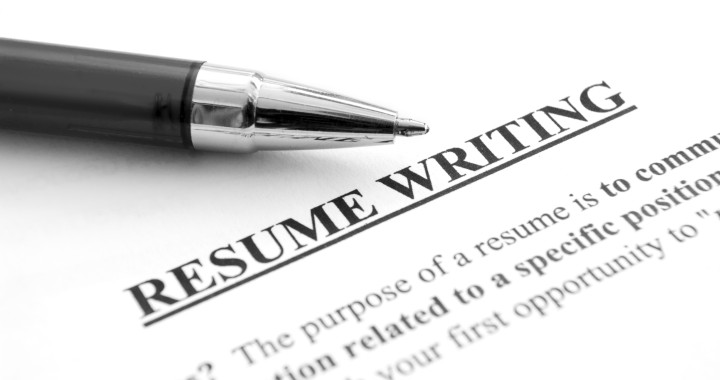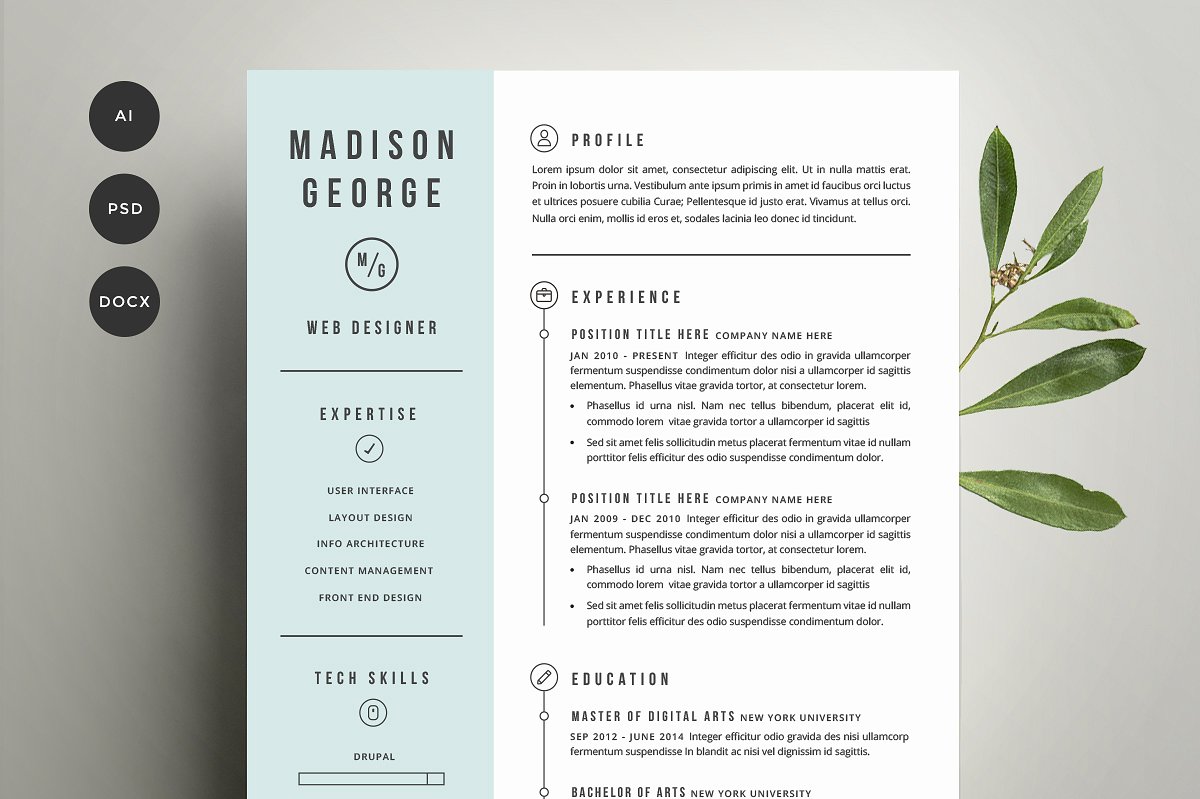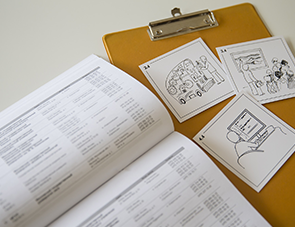Background
With the emergence of the contemporary workplace, the resume has long since been a crucial part of the job application process.

The resume provides employers with an objective analysis of an applicant’s candidacy for a position. Often times, this document is among the first components seen by employers. For this reason, the resume should be handled with attention to detail and treated seriously by an applicant.
Purpose of a Resume
When writing a resume, remind yourself that the aim is to advertise your own accomplishments and past experiences. While there’s always the space to add hints of personality or to appeal personally to your employer, the resume section is to be reserved strictly for your objective accomplishments.
CAREER
TIP
Avoid common mistakes by brushing up on our resume tips, designed with professional expertise and aimed towards professionals of all experience levels.
Be wary of overly flowering your application or making the information less readily visible. You must focus on “summing” up your experiences, while maintaining a serious and objective pose on the situation.
- The resume is meant to provide an overview of past experiences, including former work or education. Keep this information brief, concise, and to-the-point, while also remaining thorough in your coverage.
- The resume may also serve to expand on particular traits or qualifications for a position. Alongside an objective summary of your past, you may elaborate on how a particular employer could benefit from hiring you.
Resume Structure
On average, research has concluded a resume to range from around 600 to 800 words in total. The point at which you fall on this spectrum will vary depending on the depth of your past experiences.

If you find yourself to be rearing towards 600, you may benefit from “fluffing” up your current content to expand more on what you’ve done. If you’re nearing towards 800, perhaps consider trying to be more concise or to-the-point.
Usually, the most important or obviously applicable information is provided first, towards the top-end of the resume. However, as the employer scrolls down, they will be less inclined to continue reading; therefore, place less pertinent information lower. You should aim for your resume to fall into 2 or 3 pages in length.
With regards to the font styling, focus on using a basic font, such as Times New Roman, Calibri, Arial, or Georgia and stick to a font size between 10 to 12.
Resume Sections
- The first component recommended to advertise in your resume is your basic contact information. Let your employer know how to contact you straight-away.
Otherwise, they may find themselves wasting valuable time searching the other pages for it.
- Next up, provide an information-dense summary statement, which highlights your aim or intention in searching for a job. It’s often wise to tailor this statement to the particular skills needed for an application listing.
Stray away from overly generalized or “cookie-cutter” summary statements. This crucial component allows you to sum up your entire resume in 2 or 3 sentences; make them count. Most employers will take only 1 or 2 minutes to scan through a resume, often times only looking through as far as the summary statement to finalize their judgement.
- Surpassing the importance of education or even past work experience in some cases, be sure to elaborate on your skills as a worker.
Inform your employer of why you need a position and what specifically you can offer to them.
- The last major components have to do with sharing work and education experience.
While the employer may at this point be aware of your skills and intention for applying for a position, they still need to back up their suspicions with objective qualification.
Resume Styles
Applicant to applicant, resumes range in content, and most importantly, style. It is crucial to find an original and highly memorable application format, as to entice your employers to remember you from the rest of the pack. There are a few broad categories from which to base your style.

- Functional – Emphasize your skills, abilities, and qualifications, rather than simply a past overview of your experiences.
The functional resume exceeds in sending your employer the message of why specifically you aim to apply for a position. Rather than focusing solely on what experience you’ve already had, the functional resume provides you the opportunity to elaborate on what you hope to gain in the future.
- Chronological – Highlight your work experience, in many cases from most to least recent.
In the case that you’re an experienced professional, with many years of work under your belt, this style is likely your best choice. There’s no need to flower your resume with details on your skills and abilities if your accomplishments already convey that information. This choice is especially appealing to applicants with an impressive and diverse list of accomplishments.
- Combination - Mix your resume with both chronological and functional elements by providing a comprehensive overview.
Perhaps the most common of resume styles is the combination, which provides information on employment history as well as skills and accomplishments. For the “average” employee, this is likely the best choice, as it gives the opportunity to highlight your application holistically.
CAREER
TIP
The choice of resume format is a complicated subject matter. For additional information, review our specialized section on resume formatting.
Reviewing Your Accomplishments
Frequently, applicants have the tendency of focusing on simply where they’ve been in past experiences, rather than what they’ve accomplished. On the subject of resume building, it is important to focus on the latter. Make sure you convey to your employer what you have accomplished and how this correlates to your qualifications towards a new position.

When thinking back to your accomplishments, try to find a connection to what was done in the past and what you’re aiming to do in the future. Drawing this parallel may help employers to “connect” the dots or fill any gaps in their understanding of you as an applicant.
The job application is often explicit in its mentioning of skills or qualifications. If you’re struggling to find the necessary information to match these requests, review our resume tips for a more comprehensive guide.
What to Include
There are few limits regarding the content a resume may cover. Each applicant is unique in their past experiences and in terms of what they bring to the table. Therefore, there is no exact format or recommendation for information to include.
Volunteering or community service, awards, professional work-experience, post-grad coursework, skills, and college education are all fair game. When first providing this information, it is recommended to leave a few-sentence-summary on your role or history with the company/college/organization/etc.
Information to Leave Out
When considering the limited size and scope of a resume’s purpose, it is important to be selective with your inclusion of information. Avoid positions or experience more than 20 years in the past or that which is irrelevant to your application.
Some employees also fall into the mistake of including useless or duplicate information. If you previously held a position as an intern at a company, demonstrating a certain qualification, the information is only necessary as long as you haven’t built upon that skill to a greater degree of qualification. In the case of internships, make sure whatever you include demonstrates a unique skill than that from which is already explained.
CAREER
TIP
Lengthly resumes with irrelevant information are prone to losing employers' attention. Keep the content of your resume brief, consice, and to-the-point.
We would recommend straying away from high school experience or accomplishments, as this information generally gets lost when reading through all other relevant information. To sum up in one sentence, focus on what is recent and what is relevent.
How to Rewrite
Every few months, an employee may need to re-evaluate the structure, format, or content of their resume. Be sure to show mindfulness towards updating your resume, as otherwise, you may put off the impression of being lazy or unqualified.
With new experience comes a range of new accomplishments, skills, or possibly even awards. Rather than attempting to update your resume all-at-once, take the process one step at a time, updating information as soon as it gains relevance
Proofreading is an integral step in the process of resume building. Find a coworker, professor, or other qualified individual to take a look at your resume. You may also consider using an automated grammar checker, but it is important to keep in mind that doing so is at your own discretion. A minor grammar or spelling mistake may throw off your entire application; regard this step with importance.

Use of Templates
Templates may serve to expedite the resume building process. We would advise caution with doing so, however. An overly-used or generalized resume template may fail to market your unique skills as an employee. Additionally, it may toss a red-flag at an employer, in the case that another applicant uses the same style.
To choose from a range of templates, see our Resume Builder section.



